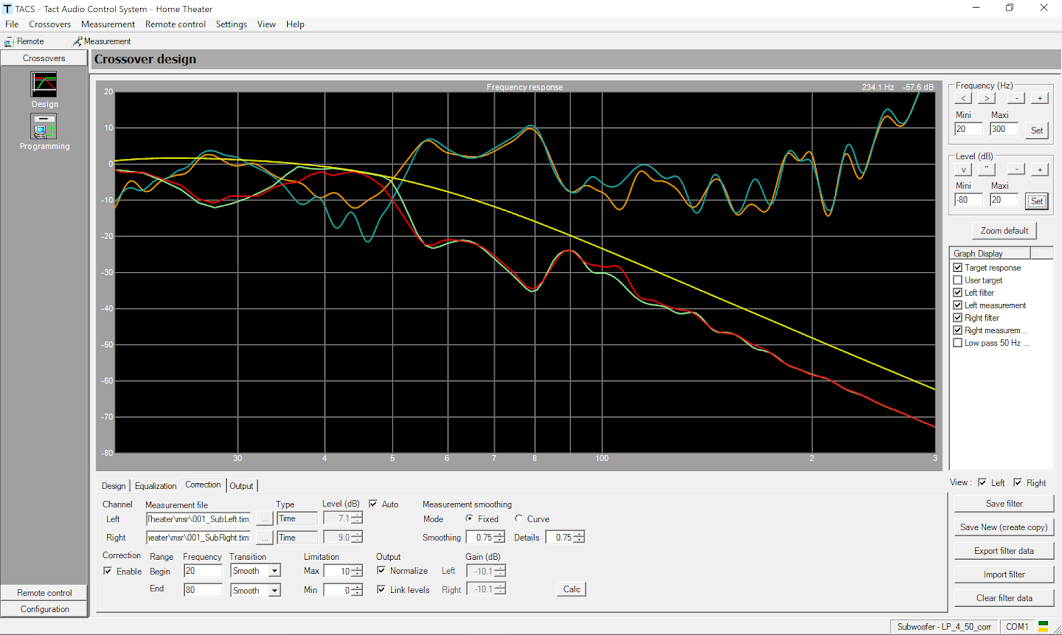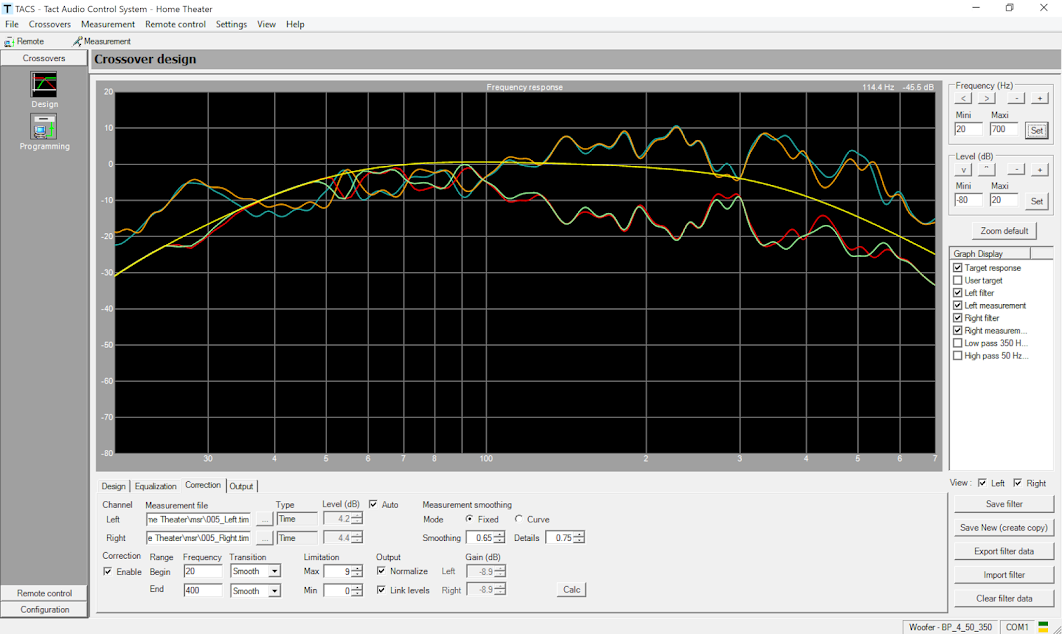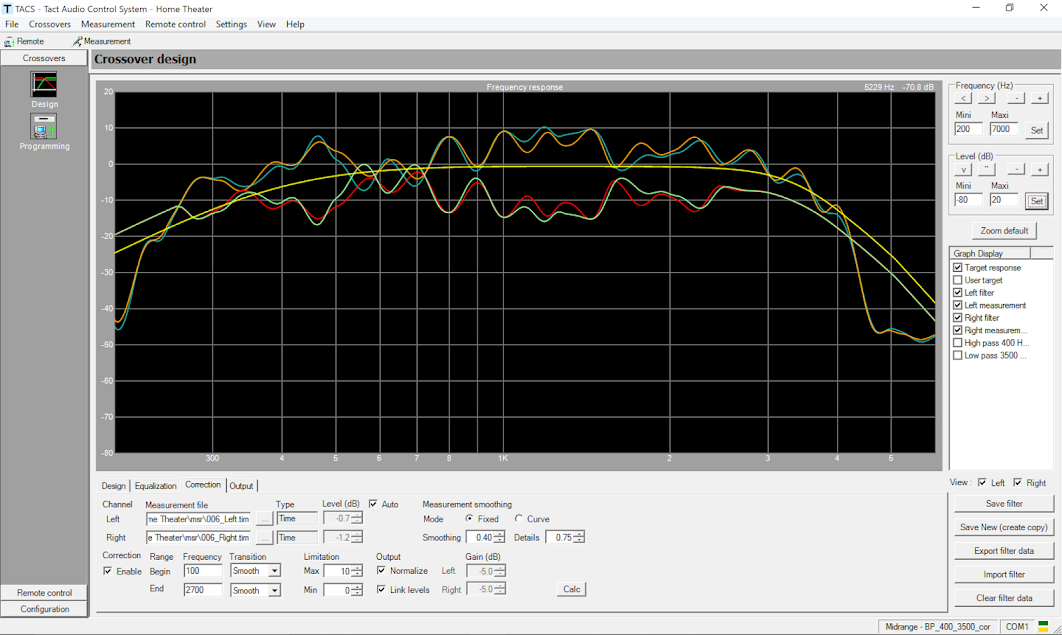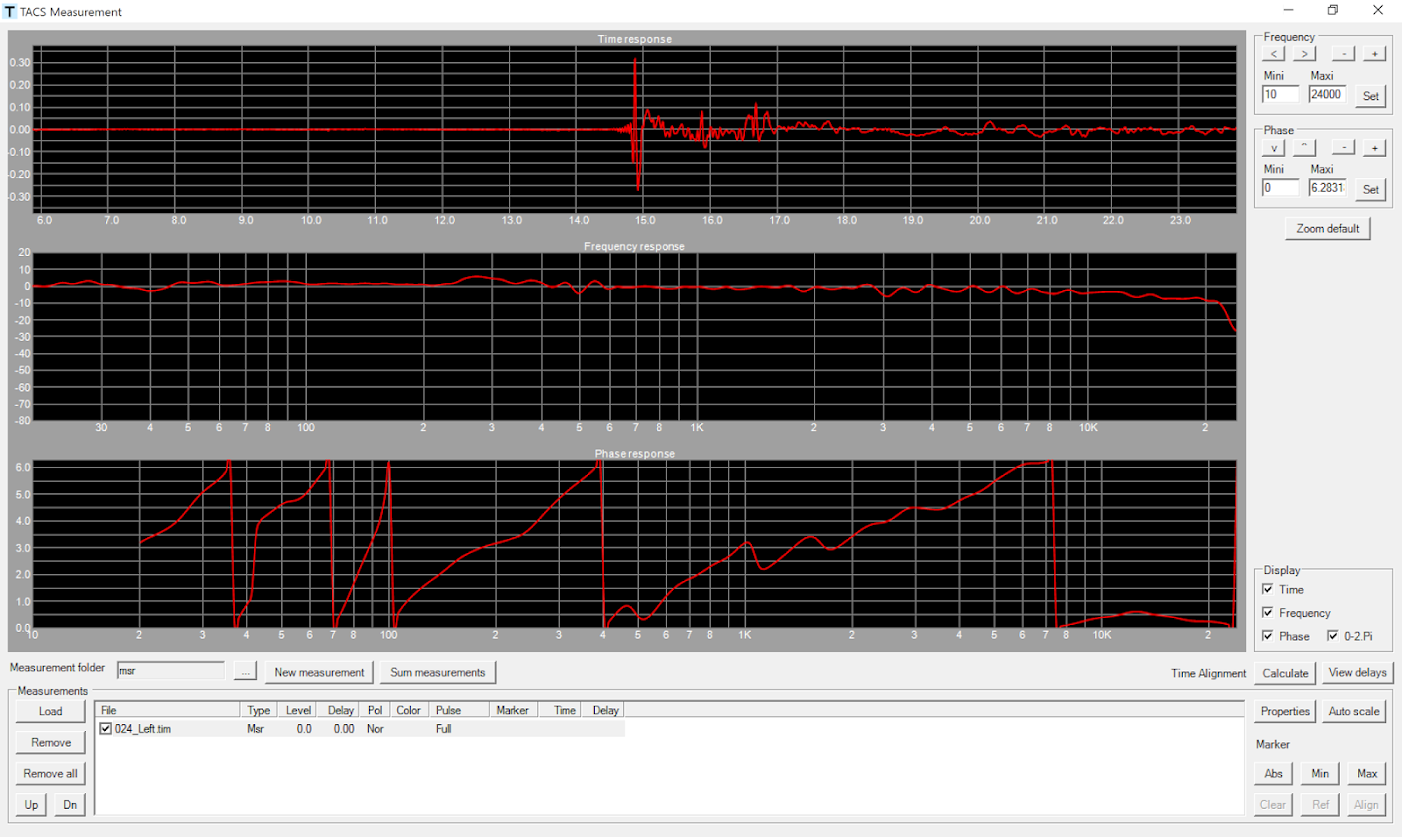- Thread Author
- #1
Hi all. I've been an audiophile for most of my life and just found Audioshark while researching a new purchase, specifically a high end network player for my system. I found a lot of great info here so thought I'd join and share my somewhat unusual system.
Speakers are the Nola Grand Reference, an older version. The sub towers are basically four individual, stacked 12" ported enclosures. The main channels have a short line array of nine Raven R-1 ribbons and seven Vifa M13Mi-08 alnico magnet midranges operating as dipoles. Four 8" Seas Excel W22EX001 magnesium cone woofers, two above and two below flanking the line array, are each in individual sealed enclosures. Carl Marchisotto supplied the loudspeakers with outboard passive crossovers using first order electrical filters, as well as a Dalhquist DQ-LP1 electronic low pass crossover for the subwoofer amp; I don't use them and rather opted for a DSP alternative. Utilizing the steep crossover slopes available with DSP, I was able to make the subwoofers sonically (if not visually) inapparent. Dynamics improved considerably, which I attribute to rapidly rolling off the Ravens' output below their crossover point.
Amplification chain is rather unconventional, a complete TacT Audio setup with RCS 2.2X digital preamp and quartet of S2150 power amplifiers. Each piece was modified by Aberdeen/MauiMods with upgraded power supplies, passive components, and internal cabling. I use the 2.2X only as a master volume control and digital signal distribution hub, except during the setup process when it is used for taking measurements needed for room/driver correction. Each amplifier accepts a full range PCM digital signal (up to 24/192) which is then transformed in real time using a custom filter that includes crossover, room/driver correction, target curve adjustment, parametric EQ, and time/phase compensation. Finally, direct PCM>PWM conversion is performed, with volume controlled by manipulating voltage on the rails; there is no attenuator in the actual signal path, nor are any bits lost to reduce level. Each driver group is connected directly to its amplifier. The designer (Radomir Bozovic aka 'Boz') was truly a genius and way ahead of his time. Sadly he lacked comparable business and marketing skills, and TacT is long gone.
Power is supplied by a PS Audio P10, which just recently replaced a Running Springs Audio Haley. I was hesitant to purchase it, having had a lot of trouble with a P1000 regenerator I bought many years ago, but this unit seems fantastic and the TacT gear really seems to thrive on the very clean and steady 120Hz. Power cords are all carbon ribbon from Michael Wolff, who sadly passed a few years ago. AES/EBU and S/PDIF digital links as well as speaker cables are Acoustic Zen.
My source has been a modified Slim Devices Transporter, one of the original ones with the knob. It is due for replacement which is what brought me to this forum... I'm looking for a full size unit that will match my other equipment, preferably without DAC (don't need it!), with or without internal storage, and AES/EBU output which I have found consistently better than S/PDIF at least with the TacT gear). There are not a huge number of options that meet those criteria - until I'm looking at are the Aurender N10, Ayon NW-T, Bryston BPD-2, and Rockna Wavedream NET. The Aurender is calling my name but the Bryston is a lot cheaper!
Here are some photos of the system. The four pairs of speaker cables are very thick, so I channeled the concrete for them. Sound absorbing material is in place behind the fabric, so the room has some live-end, dead-end features. The big glass box up front is a 450 gallon reef aquarium that should be getting filled soon, plumbing is almost complete. For movies, a screen drops down in front of the tank and a Denon HT receiver and modest RBH Sound 7.1 surround system take over the sound... obviously I am more picky about my music then my movies






These are the filters I created and programmed into the amplifiers, using free 3rd party software called TACS. These days the trend seems to be to do this on the source end using products like AudioVero's Acourate...
Sub filter:

Woofer filter:

Midrange filter:

Tweeter filter:

Final measured response at the listening position (middle graph):

And this is the old tank, which i pulled out as it was a maintenance nightmare in the new house. Plan this time around is to ultimately have about the same amount of livestock in twice the gallons. I look forward to listening to music while watching live action in the tank

Speakers are the Nola Grand Reference, an older version. The sub towers are basically four individual, stacked 12" ported enclosures. The main channels have a short line array of nine Raven R-1 ribbons and seven Vifa M13Mi-08 alnico magnet midranges operating as dipoles. Four 8" Seas Excel W22EX001 magnesium cone woofers, two above and two below flanking the line array, are each in individual sealed enclosures. Carl Marchisotto supplied the loudspeakers with outboard passive crossovers using first order electrical filters, as well as a Dalhquist DQ-LP1 electronic low pass crossover for the subwoofer amp; I don't use them and rather opted for a DSP alternative. Utilizing the steep crossover slopes available with DSP, I was able to make the subwoofers sonically (if not visually) inapparent. Dynamics improved considerably, which I attribute to rapidly rolling off the Ravens' output below their crossover point.
Amplification chain is rather unconventional, a complete TacT Audio setup with RCS 2.2X digital preamp and quartet of S2150 power amplifiers. Each piece was modified by Aberdeen/MauiMods with upgraded power supplies, passive components, and internal cabling. I use the 2.2X only as a master volume control and digital signal distribution hub, except during the setup process when it is used for taking measurements needed for room/driver correction. Each amplifier accepts a full range PCM digital signal (up to 24/192) which is then transformed in real time using a custom filter that includes crossover, room/driver correction, target curve adjustment, parametric EQ, and time/phase compensation. Finally, direct PCM>PWM conversion is performed, with volume controlled by manipulating voltage on the rails; there is no attenuator in the actual signal path, nor are any bits lost to reduce level. Each driver group is connected directly to its amplifier. The designer (Radomir Bozovic aka 'Boz') was truly a genius and way ahead of his time. Sadly he lacked comparable business and marketing skills, and TacT is long gone.
Power is supplied by a PS Audio P10, which just recently replaced a Running Springs Audio Haley. I was hesitant to purchase it, having had a lot of trouble with a P1000 regenerator I bought many years ago, but this unit seems fantastic and the TacT gear really seems to thrive on the very clean and steady 120Hz. Power cords are all carbon ribbon from Michael Wolff, who sadly passed a few years ago. AES/EBU and S/PDIF digital links as well as speaker cables are Acoustic Zen.
My source has been a modified Slim Devices Transporter, one of the original ones with the knob. It is due for replacement which is what brought me to this forum... I'm looking for a full size unit that will match my other equipment, preferably without DAC (don't need it!), with or without internal storage, and AES/EBU output which I have found consistently better than S/PDIF at least with the TacT gear). There are not a huge number of options that meet those criteria - until I'm looking at are the Aurender N10, Ayon NW-T, Bryston BPD-2, and Rockna Wavedream NET. The Aurender is calling my name but the Bryston is a lot cheaper!
Here are some photos of the system. The four pairs of speaker cables are very thick, so I channeled the concrete for them. Sound absorbing material is in place behind the fabric, so the room has some live-end, dead-end features. The big glass box up front is a 450 gallon reef aquarium that should be getting filled soon, plumbing is almost complete. For movies, a screen drops down in front of the tank and a Denon HT receiver and modest RBH Sound 7.1 surround system take over the sound... obviously I am more picky about my music then my movies


These are the filters I created and programmed into the amplifiers, using free 3rd party software called TACS. These days the trend seems to be to do this on the source end using products like AudioVero's Acourate...
Sub filter:

Woofer filter:

Midrange filter:

Tweeter filter:

Final measured response at the listening position (middle graph):

And this is the old tank, which i pulled out as it was a maintenance nightmare in the new house. Plan this time around is to ultimately have about the same amount of livestock in twice the gallons. I look forward to listening to music while watching live action in the tank

